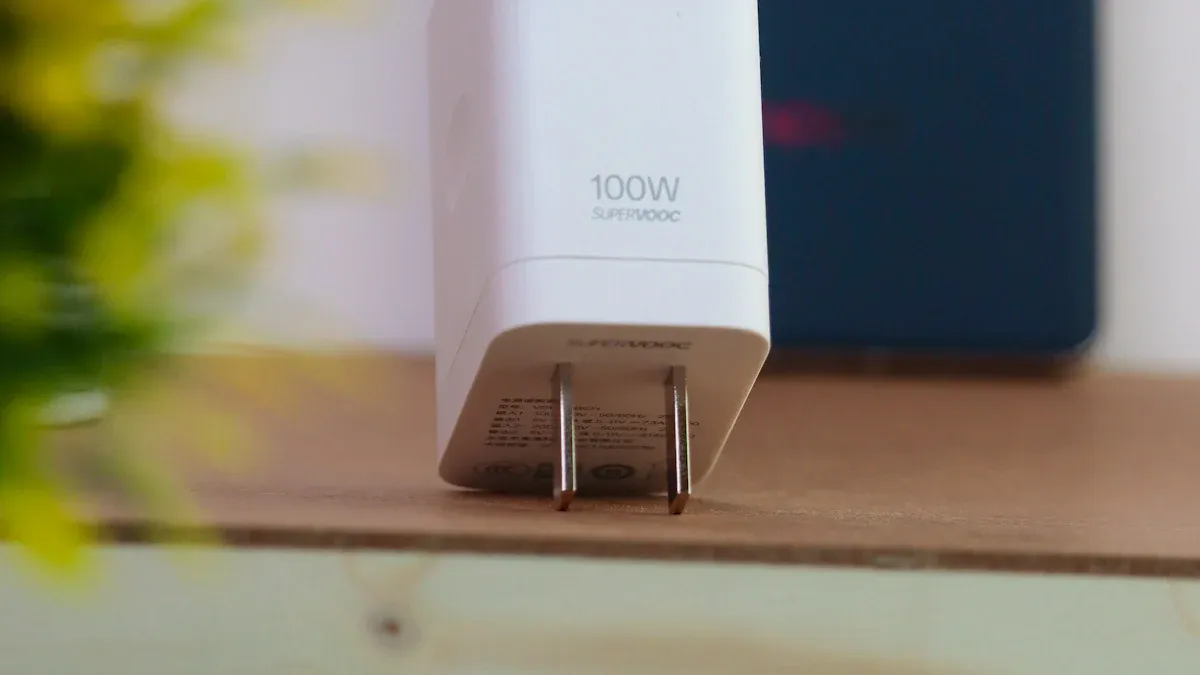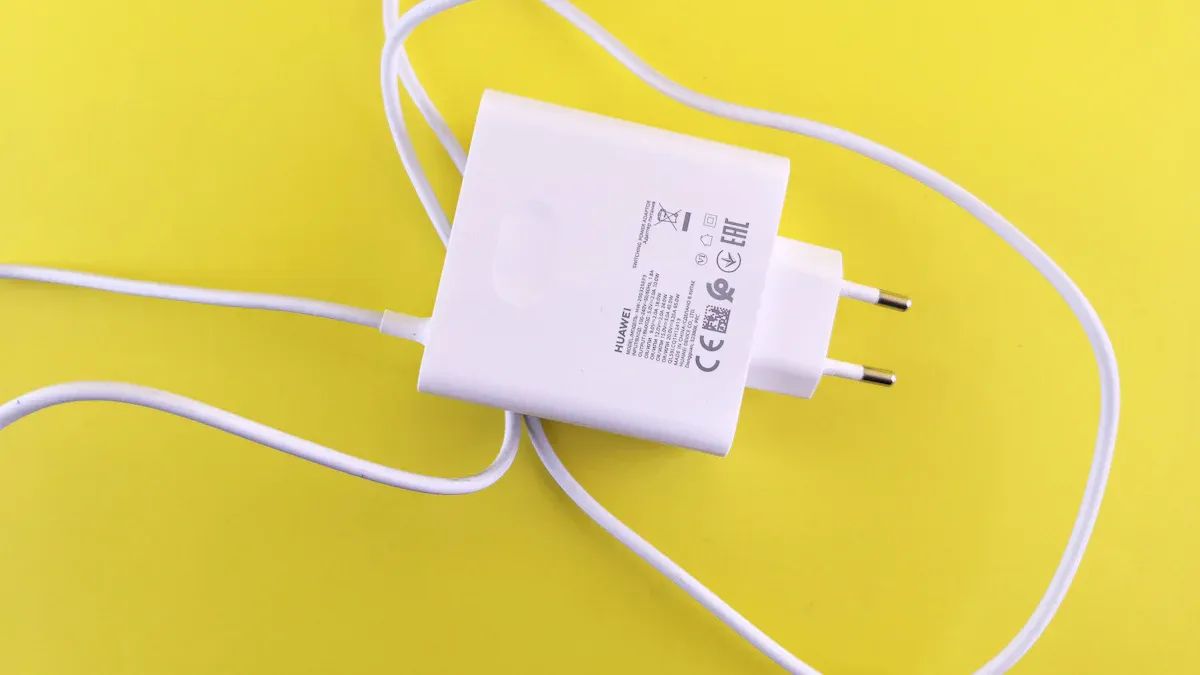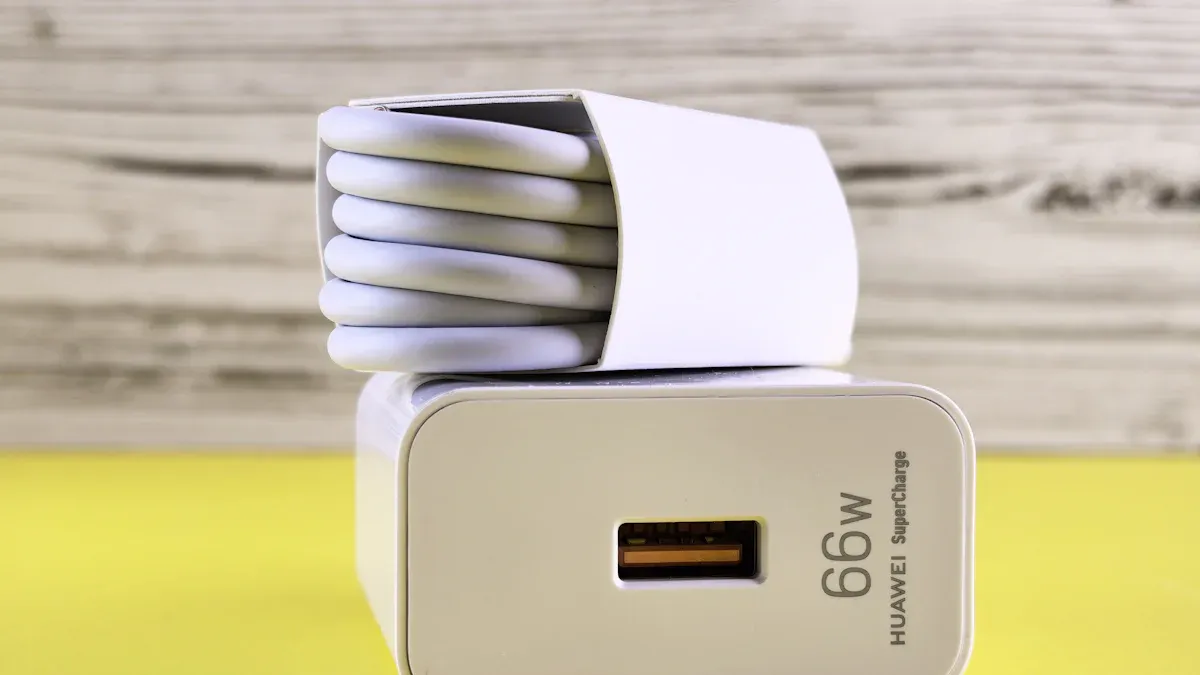USB-PD charging sets a universal standard for delivering power efficiently and quickly to devices. This technology meets the growing demand for fast and reliable charging by offering a streamlined solution for various USB devices. For example, the global USB-PD market, valued at $0.47 billion in 2023, is forecasted to grow to $2.14 billion by 2032, reflecting its rising importance.
You rely on modern technology more than ever, whether for your smartphone, laptop, or electric vehicle. The need for faster charging solutions has become critical, with projections showing 4.7 million fast EV charging stations by 2030. USB-PD technology not only addresses this demand but also has the potential to revolutionize how power is delivered across industries.
Understanding USB-PD Charging
What is USB-PD Charging?
USB-PD charging, short for USB Power Delivery, is a universal standard designed to enhance the way you charge your devices. Unlike traditional USB charging methods, USB-PD offers faster speeds and greater flexibility. It allows a single charger to power multiple devices, reducing the need for multiple adapters and cables. This not only simplifies your charging setup but also cuts down on electronic waste.
The technology supports higher power levels, with the ability to deliver up to 100 watts of power through a USB Type-C connection. This makes it suitable for a wide range of devices, from smartphones to laptops and even some electric vehicles. USB-PD also incorporates advanced safety features, such as protection against overcurrent, overvoltage, and overheating, ensuring your devices charge safely and efficiently.
Tip: If you’re looking for a reliable and fast charging solution, USB-PD charging is the way to go. It’s designed to meet the demands of modern devices while keeping your setup simple and efficient.
How USB Power Delivery Works
USB Power Delivery operates through a smart communication system between your device and the charger. When you connect a USB-PD charger to your device, the two exchange information to determine the optimal power level. This process, known as power negotiation, ensures your device receives the exact amount of power it needs—no more, no less.
Here’s how it works:
- Power Data Object (PDO): The charger communicates its power capabilities, such as voltage and current levels.
- Request Data Object (RDO): Your device requests the specific power settings it requires.
- Dynamic Adjustment: The charger adjusts its output to match the device’s needs, ensuring efficient and safe charging.
USB-PD supports multiple voltage levels, including 5V, 9V, 15V, and 20V, with currents up to 5A. Advanced modes like Programmable Power Supply (PPS) allow for fine-tuned voltage adjustments, making the charging process even more efficient. This flexibility is what sets USB-PD apart from traditional charging methods.
Key Features of USB-PD Technology
USB-PD technology comes with several standout features that make it a game-changer in the world of charging:
- High Power Delivery: USB-PD can deliver up to 240 watts of power in its latest specifications, accommodating even the most power-hungry devices.
- Universal Compatibility: It works seamlessly with USB Type-C connectors, which are becoming the standard for modern devices. This means you can use a single charger for your phone, laptop, and other gadgets.
- Safety First: Built-in protections against overcurrent, overvoltage, and overheating ensure your devices charge safely.
- Energy Efficiency: By dynamically adjusting power levels, USB-PD minimizes energy waste and extends battery life.
- Extended Power Range (EPR): The latest USB-PD revisions support higher voltages, such as 28V, 36V, and 48V, making it suitable for larger devices like monitors and electric vehicles.
Note: USB-PD’s ability to adapt to different power requirements not only improves charging efficiency but also reduces the risk of damage to your devices.
USB-PD charging is more than just a faster way to charge your devices. It’s a smarter, safer, and more sustainable solution that’s shaping the future of power delivery.
Benefits of USB-PD Charging
Faster Charging Speeds
USB-PD charging delivers a significant boost in charging speed compared to traditional methods. It allows you to power up your devices in a fraction of the time. For instance, a USB-PD charger can charge a smartphone from 0% to 50% in just 30 minutes. This is especially useful when you’re in a hurry or need your device ready for use quickly.
The technology achieves faster charging by supporting higher power levels. With USB power delivery, devices can receive up to 240 watts of power, depending on their requirements. This ensures that even power-hungry gadgets like laptops and tablets charge efficiently. Additionally, USB-PD’s dynamic power adjustment ensures that your device gets the optimal power level, preventing overheating or overcharging.
Did you know? USB-PD charging is the backbone of fast charging solutions, making it possible to charge multiple devices quickly and safely.
Universal Compatibility with USB Devices
One of the standout features of USB-PD technology is its universal compatibility. It works seamlessly with a wide range of USB devices, from smartphones and tablets to laptops and gaming consoles. This eliminates the need for multiple chargers and cables, simplifying your charging setup.
The USB-IF certification ensures that USB-PD chargers adhere to universal standards. This guarantees compatibility across various devices, providing you with a reliable and efficient charging experience. Certifications like USB-IF compliance also ensure the safety and reliability of your charging devices.
- Key Benefits of Universal Compatibility:
- Use a single USB-PD charger for multiple devices.
- Reduce electronic waste by minimizing the need for extra chargers.
- Enjoy consistent and reliable charging performance across all your gadgets.
USB-PD charging, combined with USB Type-C connectors, enhances connectivity and ensures that your devices remain future-proof. This makes it an ideal choice for modern technology users.
Energy Efficiency and Sustainability
USB-PD charging isn’t just about speed and compatibility; it’s also designed with energy efficiency in mind. By dynamically adjusting power levels based on your device’s needs, USB-PD minimizes energy waste. This not only extends the lifespan of your device’s battery but also reduces your overall energy consumption.
The technology’s focus on efficient charging aligns with global efforts to promote sustainability. By reducing energy waste and electronic clutter, USB-PD contributes to a greener planet. Its ability to replace multiple chargers with a single, universal solution further supports eco-friendly practices.
Tip: Switching to USB-PD chargers can help you save energy and reduce your carbon footprint, making it a smart choice for both you and the environment.
USB-PD charging combines faster charging speeds, universal compatibility, and energy efficiency to deliver a superior charging experience. It’s a technology that not only meets your needs but also supports a sustainable future.
USB-PD’s Impact on Industries and Devices
Consumer Electronics and Mobile Devices
USB-PD charging has transformed how you power your consumer electronics and mobile devices. Its fast charging capability ensures that your smartphone, tablet, or wearable device is ready to use in less time. This is especially important as the demand for connected devices continues to grow. USB-PD allows you to charge multiple devices with a single USB Type-C cable, eliminating the clutter of multiple chargers.
The growing consumer electronics industry has embraced USB-PD for its convenience and efficiency. For example, USB chargers enable you to power various devices using one adapter, reducing the need for multiple chargers. This simplicity, combined with fast charging, has made USB-PD a key driver in the market. The consumer electronics segment is expected to grow at a CAGR of 10.3%, highlighting the increasing reliance on USB-PD technology.
| Key Drivers | Insights |
|---|---|
| Growing consumer electronics | USB chargers simplify charging by eliminating the need for multiple adapters. |
| Fast charging capability | USB-PD’s ability to charge devices quickly is a major factor in its adoption. |
| Technological advancements | The rise of connected devices has increased the need for USB chargers. |
Laptops and Portable Computing
USB-PD charging has revolutionized portable computing by offering faster and more efficient power delivery. You can now charge your laptop through a USB Type-C port, which supports high power levels and fast data transfer speeds. This eliminates the need for bulky power adapters, making your setup more portable and convenient.
The advantages of USB-PD in laptops include intelligent power management, bi-directional charging, and the ability to charge multiple devices from one port. These features enhance your productivity and simplify your workspace. USB-PD also supports fast charging with speeds up to 20 Gbps, ensuring your laptop charges quickly and efficiently.
| Advantages of USB-PD in Laptops |
|---|
| Supports fast charging with speeds up to 20 Gbps |
| Bi-directional orientation option |
| Intelligent power management feature |
| Multiple devices can be charged from one port |
| Highly durable and long-lasting |
Automotive Applications and Electric Vehicles
The automotive industry has embraced USB-PD charging to meet the growing demand for advanced in-car technologies and electric vehicles (EVs). USB-PD systems provide fast and efficient charging for devices and infotainment systems in vehicles. This ensures that your devices remain powered during long drives.
Recent advancements in USB Type-C connectors have made them ideal for automotive applications. These connectors offer higher power output and faster charging speeds, which are crucial for modern vehicles. Companies like NXP Semiconductors and Infineon Technologies are developing innovative USB-PD controllers to support the automotive sector. The rise of EVs and government regulations have further increased the need for efficient power delivery systems in vehicles.
- Key trends in automotive USB-PD applications:
- Demand for advanced in-car technologies drives the adoption of USB-PD systems.
- USB Type-C connectors provide higher power output and faster charging speeds.
- The rise of EVs increases the need for efficient power management systems.
| Aspect | Statistic/Projection |
|---|---|
| Global connected car market CAGR | Over 20% between 2023 and 2030 |
| USB-C charging cable market size | $3.5 billion in 2024, growing to $4.14 billion in 2025 at 18.2% CAGR |
| USB-C charging cable market size (2029) | Expected to reach $8.06 billion at 18.1% CAGR |
USB-PD charging is shaping the future of automotive applications by providing reliable and efficient power delivery solutions. Whether you’re charging your smartphone or powering an EV, USB-PD ensures that your devices stay charged and ready to go.
Emerging Technologies and IoT Devices
USB-PD charging plays a crucial role in the development of emerging technologies and IoT devices. As technology advances, the demand for compact, efficient, and versatile power solutions grows. USB connectors, with their miniaturized design and adaptability, are essential for powering wearable devices and IoT applications. These features make USB-PD an ideal choice for the next generation of connected devices.
The European Union has recognized the importance of USB-PD in modern electronics. A recent directive mandates that many electronic products must include USB Type-C charging ports that meet specific standards. This regulation ensures that new devices are equipped with universal and efficient charging solutions, further solidifying USB-PD’s role in the market.
USB-C’s ability to deliver up to 240 watts of power through the latest USB Power Delivery specification 3.1 makes it a versatile option for IoT devices. Whether you’re powering a smart home hub or a wearable fitness tracker, USB-PD provides the scalability needed to meet diverse power requirements. Its universal design also enhances interoperability, allowing you to use a single charger across multiple devices.
The evolution of USB-C as the primary standard for charging and data communication highlights its importance in the future of portable and IoT technologies. Its scalable design supports the growing needs of IoT devices, ensuring seamless integration across various categories. By adopting USB-PD, manufacturers can create devices that are not only efficient but also future-proof.
USB-PD charging is more than just a convenience. It is a driving force behind the innovation of emerging technologies and IoT devices, offering a universal, efficient, and sustainable solution for powering the connected world.
The Future of USB-PD Technology
Advancements in USB Power Delivery Standards
USB power delivery continues to evolve, setting new benchmarks for charging efficiency and device compatibility. Recent advancements, such as USB PD Revision 3.1, have expanded the power delivery range to an impressive 240 watts. This enhancement allows you to charge larger devices like gaming laptops and monitors with a single USB-C adapter. The increasing ubiquity of USB-C ports across devices further highlights the growing adoption of this standard. Market demands and regulations, such as the European Union’s push for universal USB-C charging ports, are driving this trend.
Another exciting development is the rise of gallium nitride (GaN) chargers. These cutting-edge USB-C chargers are smaller, lighter, and more efficient than traditional options. As GaN technology becomes more affordable, you can expect to see more compact and high-efficiency USB-C adapters in the market. These advancements ensure that USB power delivery remains at the forefront of charging innovation.
Integration with Next-Generation Devices
The integration of USB-PD technology into next-generation devices is shaping the future of connectivity and charging. Automakers are incorporating USB power delivery systems into vehicles to support modern infotainment systems. These systems allow you to charge your devices and transfer data seamlessly during your commute. As electric vehicles gain popularity, the demand for advanced USB-C technology in cars is expected to grow. High-performance USB-C adapters are becoming essential for meeting consumer expectations for fast charging and connectivity.
Beyond vehicles, USB-PD is also making its way into emerging technologies like smart home devices and wearables. Its ability to deliver scalable power ensures compatibility with a wide range of devices. This versatility makes USB-PD a cornerstone of future-ready technology.
USB-PD’s Role in Driving Innovation
USB-PD technology is not just about faster charging; it is a catalyst for innovation. Its ability to adapt to the capabilities of USB power delivery standards has opened doors for new possibilities. For instance, USB-PD enables bi-directional power flow, allowing devices to both charge and supply power. This feature is particularly useful for portable power banks and laptops.
The universal nature of USB-C adapters simplifies your charging setup, reducing electronic waste and promoting sustainability. As USB-PD compatibility becomes a standard across industries, you can expect a seamless experience when using different devices. This technology is paving the way for a future where charging is faster, more efficient, and universally accessible.
Tip: Investing in USB-PD-compatible devices ensures you stay ahead in the fast-evolving world of technology.
USB-PD charging has redefined how you power your devices. Its ability to deliver faster speeds, universal compatibility, and energy efficiency makes it a standout solution in modern technology. By simplifying your setup and reducing waste, USB-PD ensures a smarter and more sustainable way to charge.
This technology has transformed industries, from consumer electronics to electric vehicles, and continues to drive innovation. As USB standards evolve, you can expect even greater advancements in charging efficiency and device integration. USB-PD is not just a convenience; it’s the future of power delivery.
FAQ
What is USB-PD, and how does it differ from traditional charging methods?
USB-PD delivers faster charging speeds and higher power levels compared to traditional methods. It uses smart communication between your device and the charger to optimize power delivery. This technology supports up to 240 watts, making it suitable for powering larger devices like laptops and monitors.
Can USB-PD chargers work with all USB Type-C devices?
Yes, USB-PD chargers are universally compatible with USB Type-C devices. They adapt to the power requirements of each device, ensuring safe and efficient charging. This eliminates the need for multiple adapters and simplifies your setup.
How does USB-PD improve energy efficiency?
USB-PD dynamically adjusts power levels based on your device’s needs. This reduces energy waste and extends battery life. By using a single adapter for multiple devices, you also minimize electronic clutter and contribute to sustainability.
Is USB-PD safe for my devices?
USB-PD includes advanced safety features like protection against overcurrent, overvoltage, and overheating. These safeguards ensure your devices charge safely without the risk of damage. Always use certified USB-PD chargers for reliable performance.
Can USB-PD power larger devices like electric vehicles?
Yes, USB-PD supports Extended Power Range (EPR), delivering up to 240 watts. This makes it suitable for larger devices, including electric vehicles and automotive infotainment systems. Its scalability ensures compatibility across diverse applications.



